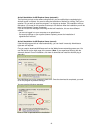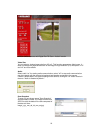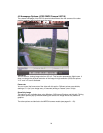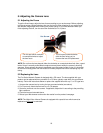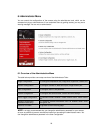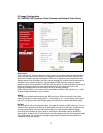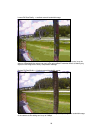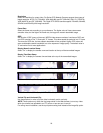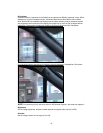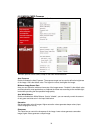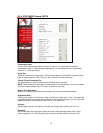
27
6.2 Image Configuration
6.2.1 MPEG4 CCD Cameras, Dome Cameras and Network Video Server
Rate Control
The bit rate used in video encoding has a direct impact on the video quality and the bandwidth
used to stream video over the network. As opposed to constant bit rate (CBR), VBR files vary
the amount of output data per time segment. VBR allows a higher bit rate (and therefore more
storage space) to be allocated to the more complex segments of media files while less space is
allocated to less complex segments. The advantages of VBR are that it produces a better
quality-to-space ratio compared to a CBR file of the same size. The bits available are used more
flexibly to encode the sound or video data more accurately, with fewer bits used in less
demanding passages and more bits used in difficult-to-encode passages.
CBR is the best option, if you have to limit the bandwidth available to the camera; e.g., in order
to save valuable bandwidth in busy networks.
Quality
This option is available when selecting the VBR rate control. Define the quality of the video
output by assigning a value ranging from "1" = best quality to "31" = worst quality. Good values
are 4 or 5, as they provide a good image quality at a relatively low network bandwidth usage.
Bit Rate
Set the target bit rate of the encoding video. This option is available in CBR mode only. You can
set the bit rate values from 30 kbps up to 9000 kbps at an interval of 300 kbps. A higher bit rate
ensures higher quality of the live video at the expense of more network bandwidth usage.
Controlling the maximum bit rate is good for controlling the bandwidth used by the MPEG4
video stream. As the bit rate is fixed, the frame rate and image quality can be affected adversely.
The image quality can be reduced if complex image material requires more bandwidth than
allowed by the bit rate settings.



